Brief me

Climate Change, population dynamics and migration: a complex nexus
In the debate on environmental migration, one of the most natural questions is also one of the most contentious: how many people are today displaced because of environmental degradation? and how many will be displaced tomorrow?
The CLICIM project – CLImate Change Induced Migration - aims at the provision of evidence on the nexus between climate change and population dynamics in Africa. It features a strong relevance for current and future migration, development, cooperation and climate adaptation policies.
Climate change induced phenomena, such as changes in climate and temperatures, have both direct and indirect impacts on structural migration factors, thus affecting population dynamics through a complex set of interactions.
In this project, the JRC seeks to disentangle the role of climate factors in affecting population migration and mobility in Africa, by focusing on slow-onset climatic events - such as increasing temperatures (UNFCCC, 2012) and net migration estimates at high spatial resolution. The latter are based on population distribution datasets collected for the last five decades (1975-2015) by the JRC Global Human Settlement Layer and on estimated population projections for the decades to come.
By looking at population distribution projections under different Shared Socio Economic Pathways (SSP) scenarios, the project seeks to quantify and anticipate the future response, in terms of mobility and migration, of population exposed to climate change and to provide evidence on population vulnerability to climate change in a long-term perspective.
Mapping population dynamics at high spatial resolution: an example from the Sahel region
A first case study has been conducted on a selected geographical area crossing the borders of Mauritania, Mali, Guinea and Senegal in the Sahel region. The period 1980-85 was selected given the exceptionally serious drought registered in this time span.
Average temperature variation for the 1980-1985 time period is represented on Fig1 (56 km2 grid-cell level). Net migration for the same time period is shown in Fig2 and calculated as:
- Positive net migration: excess of immigration over emigration
- Negative net migration: excess of emigration over immigration
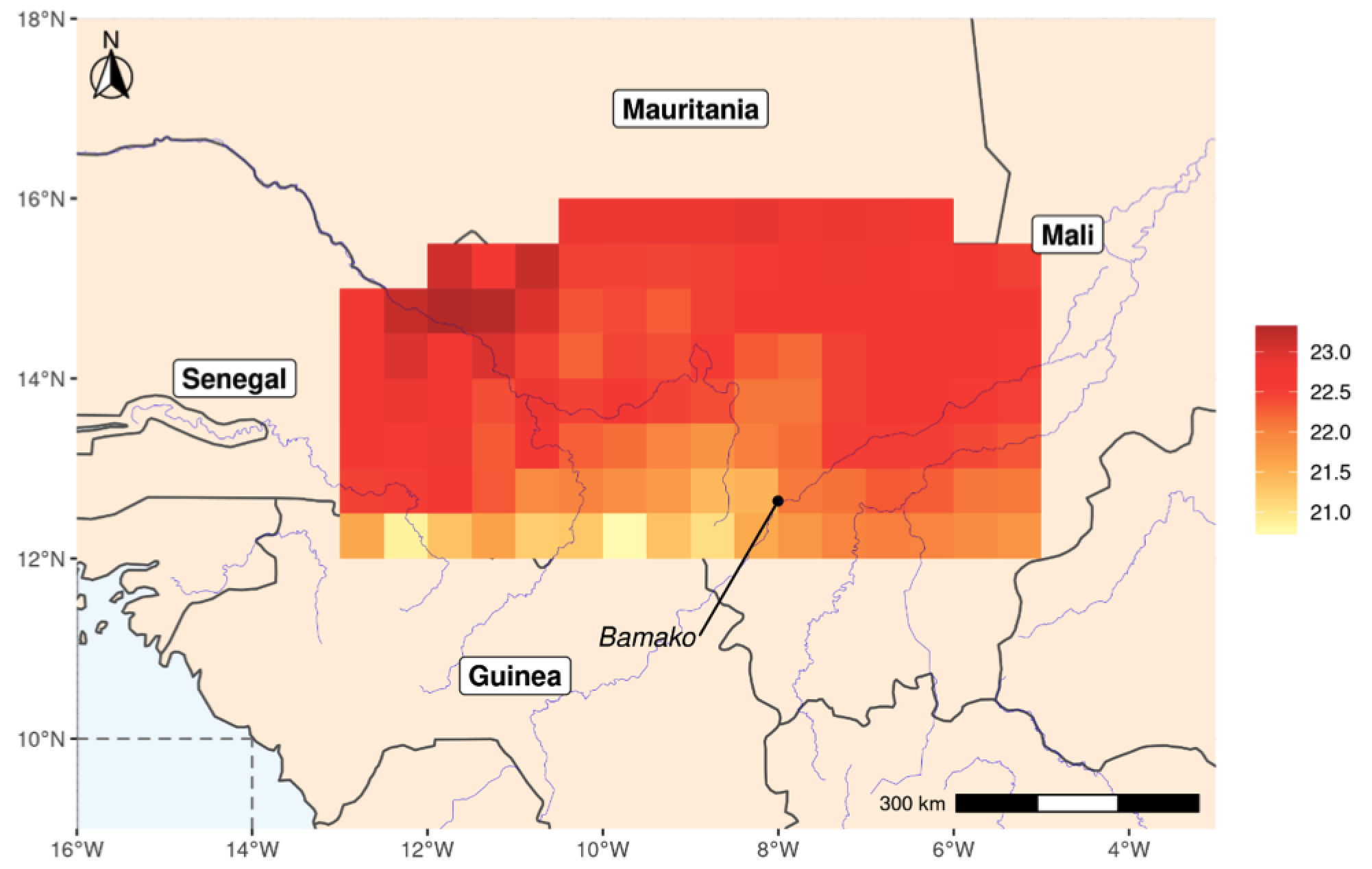 |
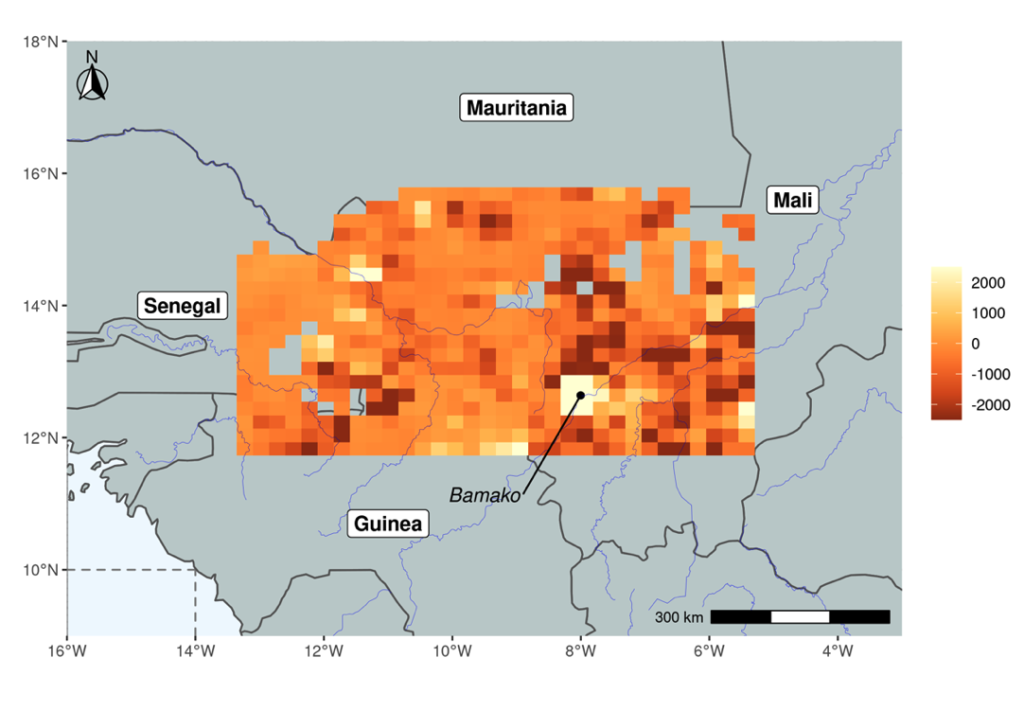 |
Reports and data
Since the start of the project in 2020, CLICIM has produced several reports. Extensive work has been conducted:
The Link between Disaster Displacement and Migration Intentions (Deuster, 2023)
This report uses rich global survey data from the Gallup World Poll to analyse the relationship between environmental conditions, displacement and migration. An instrumental variable model is used to link geocoded data on environmental disasters to individual anticipation of displacement and migration aspirations. The report confirms the established finding that the connections between environmental factors and human mobility patterns at various spatial scales are complex and context specific. In particular, the report suggests that in less-developed regions an expectation of higher risks of future environmental disasters leads to a lower individual desire to migrate internationally. By contrast, in least-developed regions the anticipation of higher risks of environmental disasters induces those individuals who wish to migrate internationally to increase their efforts to plan for international migration. These results point to causal relationships between environmental factors and migration behaviour in countries with lower levels of development. They add further nuanced findings to discussions on climate change exposure, vulnerability and ‘environmental immobility’ and on climate-induced migration and displacement of different types and at various spatial scales.
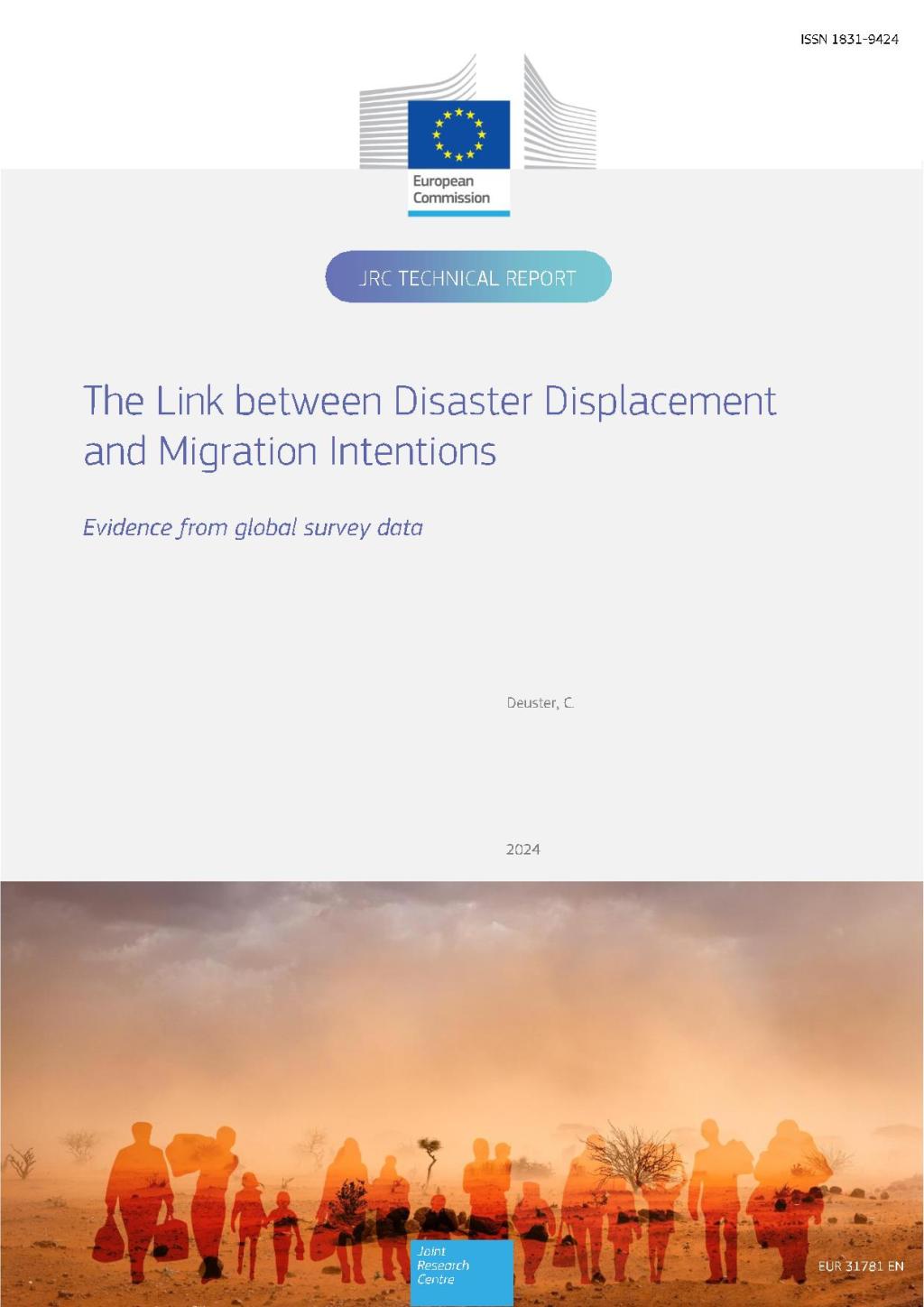
Demography and climate change (Deuster et al., 2023)
Demography is intimately related to both climate change adaptation and mitigation. The report focuses on demography and climate mitigation through analyses of trajectories for emissions and population at global and EU levels. At the global level, the report highlights the role of population momentum. While population growth implies almost by definition higher emissions, at least in the short term, the intrinsic inertia in demographic processes implies that solutions to reduce emissions need to come from reducing inequalities, the greening of the economy and a change in consumption rather than from interventions on fertility. At the EU level, the report finds that although in absolute terms older people emit less, they have higher per capita emissions, a greater share of their emissions is concentrated in carbon-intensive consumption items and they are less likely to change their attitudes or behaviour towards more environmentally friendly patterns. Considering the trends for the ageing of the EU population, these intergenerational differences in consumption and attitudes add a new policy challenge to the already pressing need to reduce the differences in responsibilities for emissions linked to income.
Global estimates of net migration at high spatial resolution 1975-2020 (Alessandrini et al., 2023)
This report describes a set of global net migration estimates in five-year intervals from 1975 to 2020 at a spatial resolution of about 1 km. Our estimates rely on an indirect estimation technique based on the demographic balancing equation. Compared to existing sets of estimates of spatially disaggregated net migration, three novelties characterise our new estimates. First, we expand the time coverage of the estimates by using updated population data at high spatial resolution from the JRC GHSL project. Second, we apply a standard definition of rural-urban typologies in the three classes of cities, towns, and rural areas. Third, we refine the estimation approach by accounting for variation of fertility and mortality across these typologies. This provides a more accurate representation of demographic behaviour across the rural-urban continuum. Validation exercises show that the new approach of accounting for fertility and mortality differences at sub-national level is consistent with basic empirical findings. In addition, the mobility patterns revealed by our net migration estimates are consistent with net migration data at sub-national level derived from Eurostat and national statistical offices. In line with former analyses, the new set of estimates allow analysing the relationship between climate change and migration at high spatial resolution and exploring geographical patterns of urbanisation, rural-urban migration, and population redistribution at the global level.
Visualise, explore and download the updated global map of net migration on the KCMD Dynamic Data Hub.
Local conflict, population dynamics and climate anomalies in Sudan and South Sudan (Conte et al., 2022)
The report explores the association between climate anomalies, population dynamics, conflict and organised violence in Sudan and South Sudan, at the sub-national level and for the years 1989-2015. The analyses are conducted using a spatial approach and with geocoded information on organized violence events, climate anomalies and population dynamics. Our results indicate a positive correlation of temperature anomalies with conflict and organised violence at the local level. Precipitation anomalies also positively correlate with organised violence, but to a lesser extent than temperature anomalies. We further explore the climate-security nexus in rural and urban environments in the two countries. Urban areas appear more vulnerable to the risk of organised violence, with the latter positively associated with temperature and precipitation anomalies, as well as with positive net migration. In less densely populated areas, violence is associated with climate anomaly values, though the correlation is lower than in densely populated areas. These results are also confirmed by the analysis based on the number of violent events. Finally, we observe a strong temporal dependence of violent events at the sub-national level.
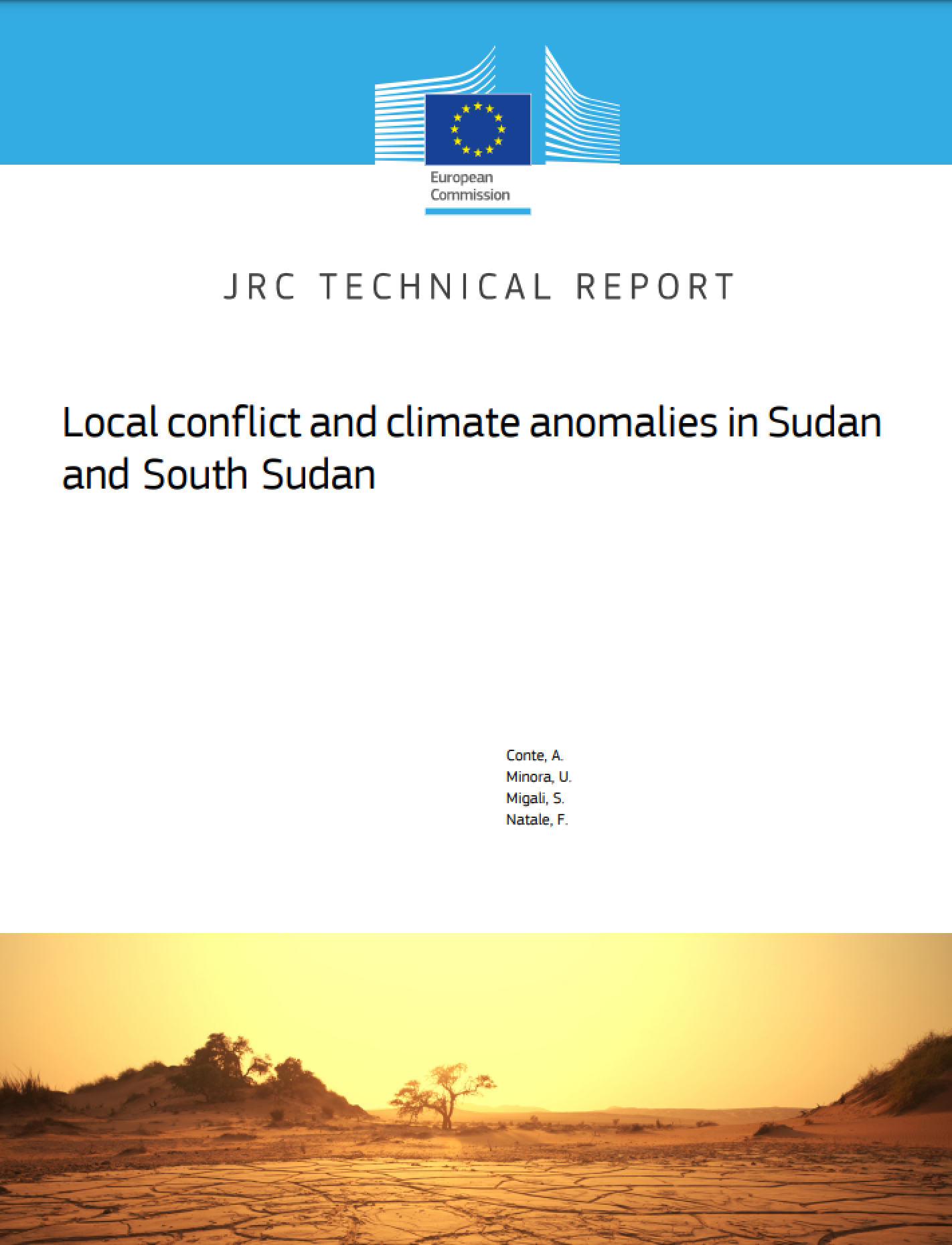
Population exposure and migrations linked to climate change in Africa (McMahon et al., 2021)
The report quantifies exposed and vulnerable populations to climate change in Africa based on climate, demographic and socio-economic scenarios and analyses past trends, to detect statically significant associations between net migration and climate. It follows a spatial demographic approach and covers the entire territory of Africa with data and projections at high geographical resolution spanning from 1975 to 2100. These macro analyses are complemented by case studies looking at the relation between climate change displacement and urbanization in Egypt, drought migration in the Sahel regions and the role of conflicts in Sudan and South Sudan. Finally, the report considers individual perspectives using survey data on the perceptions in Africa about climate change and the desire to migrate. The findings of this report support the ongoing integration of EU policymaking on climate change, adaptation and migration. Specifically, it highlights the importance of further mainstreaming an understanding of climate change processes into demographic processes and adaptation actions at a local level.

Screening and Selecting Climate Change Impact Parameters as Potential Drivers of Migration
In this report, JRC conducted a technical screening and selection exercise of 95 climate/weather parameters and indices to assess their suitability for the CLICIM project. Their temporal and geographical coverage and relevance have been analysed to proceed towards the final selection of 37 meteorological parameters and extreme climate/weather indices and provides references on their use in the context of migration studies.
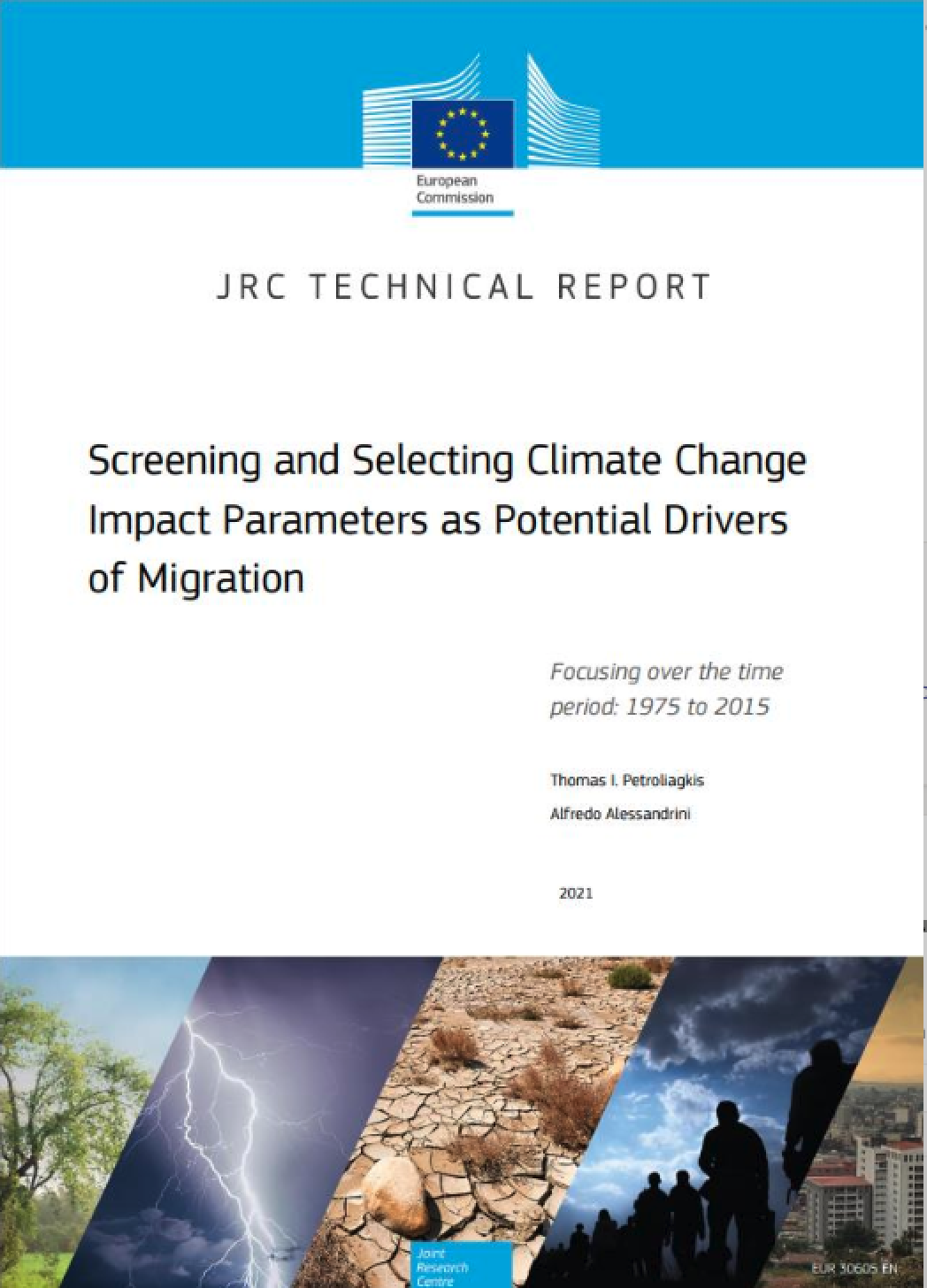
Population dynamics, climate change and variability in Western Africa: the case of Sahel regions (Alessandrini et al., 2021)
In this report, JRC conducted a first case-study analysis of the potential relationship between population, migration and climate change in the Sahel. The report provides a mapping of the population exposure to climate change in the selected territory over the period 1975–2015. In particular, it identifies the geographical distribution of populations affected by droughts and how their demographic dynamics have changed over time. Second, the report develops a modelling exercise to investigate the climate change–migration nexus. Results from the model confirm a significant association between net migration and drought intensity, which is more accentuated in rural areas. Model findings also document that increasing temperatures and precipitation have contributed to decreasing net migration over the considered period.

Estimating net migration data at high spatial resolution (Alessandrini et al., 2020a)
This technical report presents new estimates of net migration at high spatial resolution produced by the Joint Research Centre (JRC) – Knowledge Centre on Migration and Demography (KCMD). The development of a new global grid on net migration data is the first step of the CLICIM project. The report uses demographic indirect estimation techniques based on population data from the JRC Global Human Settlement Layer (GHSL) to estimate five-year net migration from 1975 to 2015 at a spatial resolution of about 25 km2. Notably, the recent definition of Degrees of Urbanization proposed by the European Commission and developed by the JRC is applied to distinguish net migration in urban and rural areas. Findings from the new datasets constitute the basis for further analyses on the relation between climate change and migration.
Latest knowledge from this Project
Global estimates of net migration at high spatial resolution 1975-2020
Ukraine's population future after the Russian Invasion
More information
| Originally Published | Last Updated | 28 Feb 2021 | 16 Jan 2024 |
| Knowledge service | Metadata | Migration and Demography | Drivers of MigrationDemography |
| Related organisation(s) | JRC - Joint Research Centre |
| Digital Europa Thesaurus (DET) | climate changepopulation dynamicsmigration |
Recommended reading
Water sovereignty as a pathway to food and energy security in Afghanistan
Climate change, crop yield, and food security in Sub-Saharan Africa
Global food security in a turbulent world: reviewing the impacts of the pandemic, the war and climate change
Share this page
